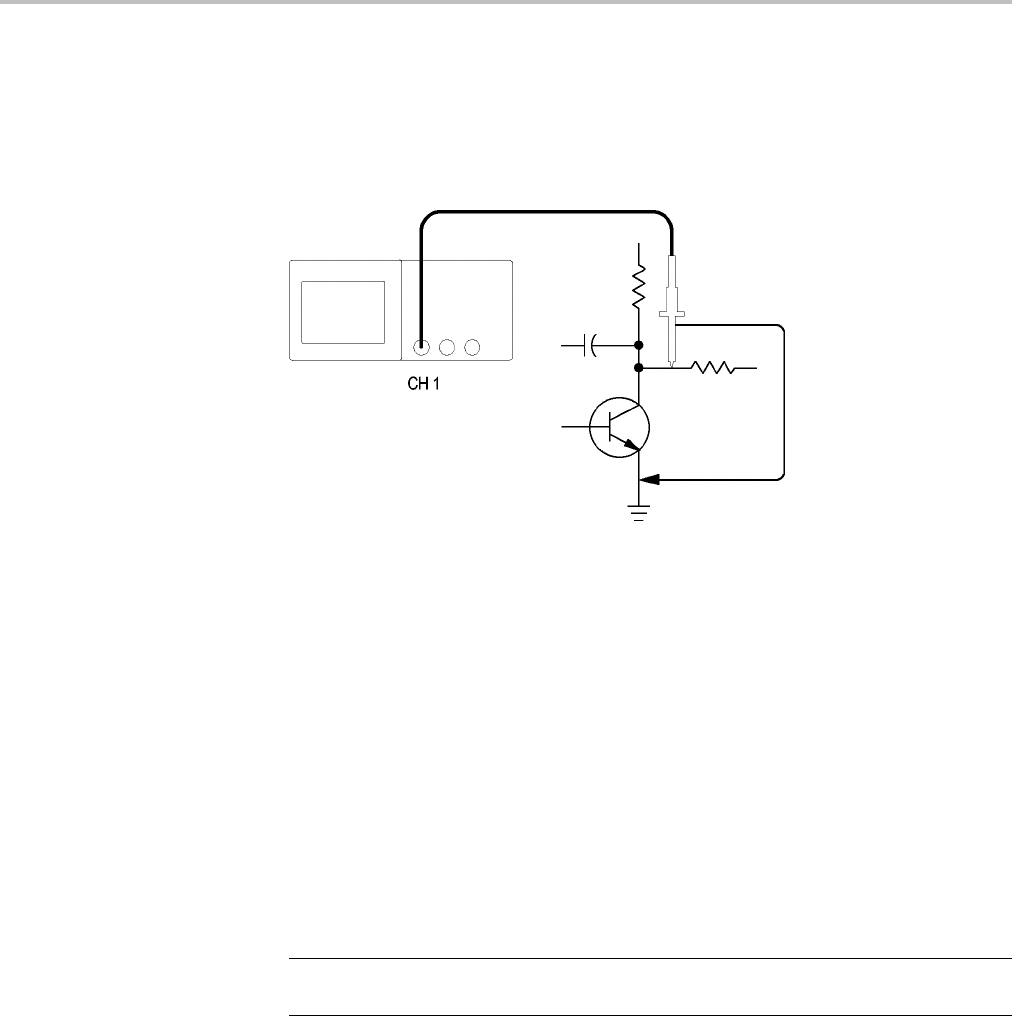User manual
Table Of Contents
- toc
- General safety summary
- Compliance Information
- Preface
- Getting Started
- Operating Basics
- Understanding Oscilloscope Functions
- Application Examples
- Taking Simple Measurements
- Using Autorange to Examine a Series of Test Points
- Taking Cursor Measurements
- Analyzing Signal Detail
- Capturing a Single-Shot Signal
- Measuring Propagation Delay
- Triggering on a Specific Pulse Width
- Triggering on a Video Signal
- Analyzing a Differential Communication Signal
- Viewing Impedance Changes in a Network
- Data Logging
- Limit Testing
- Math FFT
- USB Flash Drive and Device Ports
- USB Flash Drive Port
- File Management Conventions
- Saving and Recalling Files With a USB Flash Drive
- Using the Save Function of the Print Front Panel Button
- USB Device Port
- Installing the PC Communications Software on a PC
- Connecting to a PC
- Connecting to a GPIB System
- Command Entry
- Connecting to a Printer
- Printing a Screen Image
- Reference
- Appendix A: Specifications
- Appendix B: TPP0101 and TPP0201 Series 10X Passive Probes Inform
- Appendix C: Accessories
- Appendix D: Cleaning
- Appendix E: Default Setup
- Appendix F: Font Licenses

Application Examples
Taking Simple
Measurements
You need to see a signal in a circuit, but you do not know the amplitude or
frequency of the signal. You want to quickly display the signal and measure the
frequency, p
eriod, and p eak-to-peak amplitude.
Using Autoset
To quickly display a signal, follow these steps:
1. Push the 1 (channel 1 menu) button.
2. Push Probe ► Volt age ►Attenuation ► 10X.
3. If using P2220 probes, set their switches to 10X.
4. Conn
ect the channel 1 probe tip to the signal. Connect the reference lead to
the c ircuit reference point.
5. Push
the AutoSet button.
The oscilloscope sets the vertical, horizontal, and trigger controls automatically.
If y
ou want to optimize the display of t he waveform, you can manually adjust
these controls.
NOTE. The oscilloscope displays relevant automatic measurements in the
waveform area of the screen based on the signal type that is detected.
For oscilloscope-specific descriptions, refer to the Reference chapter. (See
page 79, Autoset.)
30 TBS1000 Series Oscilloscopes User Manual










